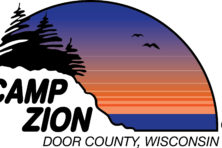Liberty Grove assessment review drags on
- Share
- Tweet
- Pin
- Share
The Town of Liberty Grove continued sifting through assessment appeals Wednesday as the Board of Review stretched into its sixth day.
“It’s tedious,” said Town Chairman John Lowry during a lunch break Monday. “But you can’t really stop people or give them a time limit to make their case. We’ll be at it a long time.”
The review could stretch into Friday.
Property owners have appealed assessments for over 300 parcels in the town after the latest revaluations raised assessments as much as 30 percent over their 2002 levels. Owners questioned how their values could skyrocket in the midst of a recession spurred by the collapse of the housing market.
Lowry said people fail to recognize that most of that property value increase was realized during the peak years of the market from 2003 – 2007, and the assessment compensates for several years of properties being undervalued. He said the assessment performed by Town Assessor David Dorschner that put the overall value of the town at 104 percent of fair market value “is fair.”
The state lowered Liberty Grove’s total equalized value from $984.1 million in 2010 to $979.4 million in 2011. It peaked at $1.06 billion in 2008.
“The bottom line is the mill rate is going down,” Lowry said, stressing that an increased assessment does not necessarily equal an increase in taxes, at the town level at least.
The mill rate is the amount of tax a property owner pays for every $1,000 of equalized value. Last year the rate for the town was $2.01, after this revaluation it is expected to drop to $1.44.
Lowry conceded that the notifications sent to property owners could have included better explanations for the increase. Dorschner did not include a letter explaining the assessment process or how he reached his values when he sent the new assessments. He said that will change the next time a revaluation is performed.
Over 300 property owners met with Dorschner prior to the Nov. 9 Board of Review to discuss their assessments. Many assessments were changed, which is not uncommon.
The Board of Review is a quasi-judicial proceeding. Property owners state their case to have their assessment changed, followed by the assessor explaining how he determined the value of the property. The town board and town clerk then vote on whether to alter the assessment.
The Board of Review has lasted from 9 am to 6 pm each day. Board members are paid $35 per day, Lowry said. The town also pays the town attorney and a stenographer to be at the proceeding. The Board of Review process is included in the assessors contract, Lowry said.
Dorschner has not responded to several requests for comment, but Mike Walker, who has been assessing properties in Door County for 38 years and performed the revaluation for Ephraim this year, said the latest revaluation is grounded in the realities of the local market.
Though the value of existing homes has dropped in most areas, new construction has added value, he said. Of course, there’s not a lot of new construction and remodeling going on now, so that doesn’t account for the entire offset.
Walker said there’s another important factor driving up municipal values.
“The old saying that ‘they’re not making any more land’ is true,” he said. “But though they aren’t making any more of it, they are subdividing it into smaller plots, and that makes it more valuable.”
A parcel is thus usually valued significantly higher if it has a three-unit condominium than if it has just one single-family home.
State statute mandates that a town’s assessed value be within 10 percent of fair market value, a figure determined by the Wisconsin Department of Revenue.
Prior to this year’s revaluations, Ephraim values were at 80 percent of FMV and Liberty Grove was at 87 percent.
3 Key Points About Property Assessments
• An increased assessment does not necessarily equal an increase in taxes. If a town’s assessment goes up, but spending does not, then the mill rate goes down – and your tax burden stays the same.
• Where your assessment puts you in relation to your neighbor does matter. An increased assessment may not raise your taxes, but if your neighbor’s assessment doesn’t increase at the same rate, then you will end up paying more than your fair share. If your property is very similar to your neighbor’s, but it’s assessed at double the value, then you should visit the assessor or attend the Board of Review to appeal the assessment.
• Revaluations and equalized values level the tax burden among communities. The equalized value determined by the state (based on figures reported by municipalities that are applied to the state’s formula) ensures that different municipalities within a county are paying their appropriate share of county, state, school, and technical college taxes.
“If one community is assessed really high and one is really low, we need to equalize that out so that every community is paying their fair share,” says Stephanie Marqui, spokesperson for the Wisconsin Department of Revenue. “Municipalities that are undervalued aren’t paying their fair share of the tax bill, which means another community is paying too much.”
If Ephraim is assessed at 80 percent of fair market value, and Sister Bay is assessed at 100 percent, then Ephraim property owners are getting a deal on their school, county, state, and technical college taxes.


